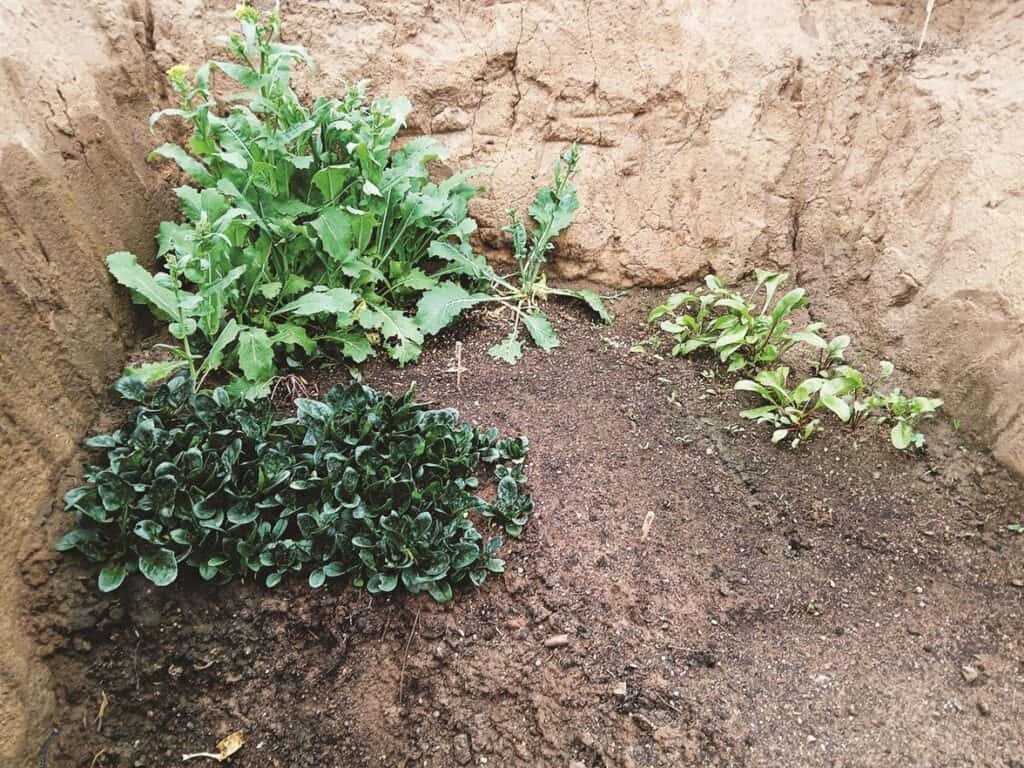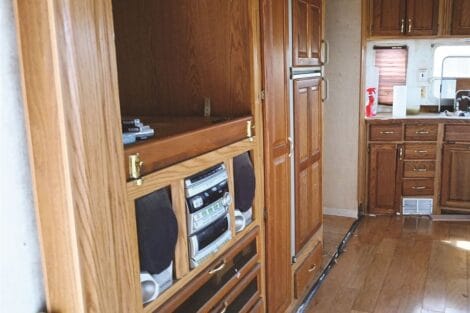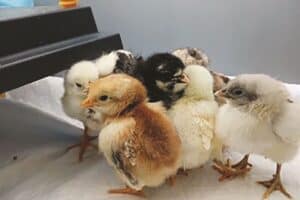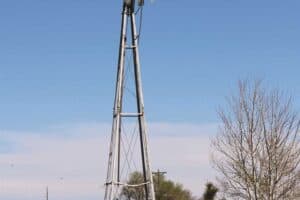Longtime local journalist Bill Radford and his wife, Margaret, live on 5 acres in the Falcon area with chickens, rabbits, dogs, cats, a flock of parakeets, goats and two horses. Contact Bill at billradford3@gmail.com.
Please note: Last June, In November and In December should all be in bold font. Hopefully, they transferred that way.
Chickens new home; trailer upgrade; winter spinach
By Bill Radford
It has been some time since I used this column to check in on the happenings at Radford Ranch. So here is an update:
Last June, I wrote about a new home for our chickens: an 8-foot-by-12-foot shed that we bought from a company in Falcon; thus, bringing all the chickens together under one roof rather than in the two coops we had used previously.
It took some time for the chickens to get used to their new quarters. We kept the existing coops up in case the shed didn’t work out, and the chickens, being creatures of habit, really wanted to get back to them. For at least the first few nights, I had to drive them into the shed and close them in; otherwise, they just stood out in the dark bemoaning their fate. And with the disruption to their routine, their egg laying largely came to a halt for weeks; when they did finally start laying again, they did so pretty much everywhere except in the new nesting boxes I had set up.
Now, all these months later, they seem to be at home in the shed; and, for the most part, use their nesting boxes. With insulated walls and the addition of a heater during the worst, minus-zero nights, they seemed cozy enough during the winter.
With the shed, we switched to sand for bedding rather than the pine shavings we had used for years. Clean, dry sand is said to reduce the threat of bacteria and is easy to clean as you can simply scoop up the droppings as you would with cat litter. Of course, the idea is you should be out scooping every day; with the winter, that definitely did not happen. But we’re heading into spring with new sand and new resolve.
In November, I wrote about our purchase of a used trailer — a 34-foot HitchHiker —to serve as an office for Margaret and guest quarters for visiting family and friends. While seemingly a bargain at $2,500, it quickly turned out to be a money pit. While it had been advertised as being in rough shape, we had no idea how rough. We knew the carpet — which was urine-soaked thanks to a canine resident and smelled of cigarette smoke thanks to the human resident — would have to be pulled. But we were told the roof was in good shape, a statement we could have found to be wrong if we had only bothered to climb up and check. We didn’t know about the leaks in the roof and the resulting rot in the walls.
Two big — and costly -– jobs emerged. One was repairing and sealing the roof; the other was largely rebuilding one of the three slide-outs (rooms that extend to make more space) because of the rot. (Instead of also rebuilding the similarly rotted bedroom slide-out, we simply demolished it and closed up that space.)
So the carpet has been pulled, the slide-out in the living room repaired and other more minor repairs have been made. While the rooftop air conditioner is kaput, our RV guy determined the furnace works (yay!), though some wiring work needs to be done to make the thermostat function. And I’m largely done with installing new flooring — Bruce-brand hardwood flooring that Margaret got a great deal on; she found someone who was replacing their flooring with a different type because of flooding but had carefully salvaged what they could from the original flooring — that Bruce hardwood flooring, more than enough for the trailer and still in great shape.
After that, there’s still some painting to do and the fun of decorating; Margaret just got an electric fireplace for $30 at Goodwill that will help lend a homey touch. Whether the rebuilt slide-out and the other surviving slide-out can, indeed, slide in and out is still unknown. But since we never plan to take this trailer out on the road, it should be OK either way. Just don’t ask me what the final bill was for all this work and materials.
In December, I wrote about our efforts to construct an underground greenhouse (also known as a pit greenhouse or walipini) so that we could extend the gardening season throughout the winter. As Morningchores.com explains, “Having the growing area under the ground level gives you the thermal benefits of being cool in warm weather and warm in cold weather, similar to a root cellar. … Unlike a root cellar, though, you’ll be putting a greenhouse top on your dug-out space. That will allow the sun to come into the area and make it even warmer.”
So how did it go? Our growing space is only 8 feet by 6 feet at best, as this was a first-season experiment. Our turnips and spinach have prospered; the radishes didn’t make it, nor did the fennel or mint that we planted in holes in the dirt walls. Some of our beets survived; some didn’t. But it’s amazing to us that anything survived and grew in the dead of winter, when we had temperatures drop to as much as 10 below zero.
Now what? Despite thoughts of filling the hole up with water and having a fish pond, I think we’ll actually expand the hole a bit and continue to garden. That should make the dung beetles that have made the pit their home happy.
Photos by Bill Radford










